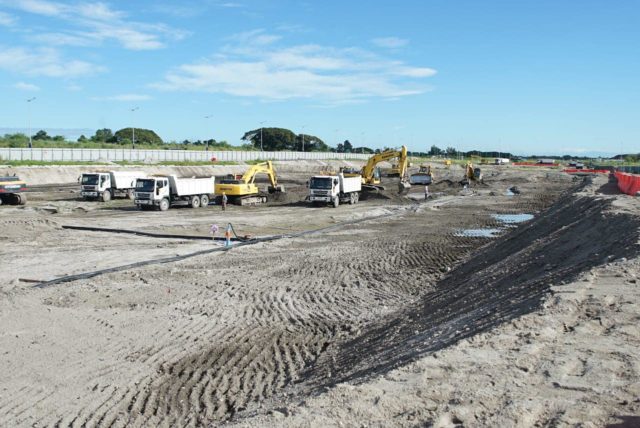CRK station. Excavation for the underground railway of the Philippine North Railway in front of the new terminal building of the Clark International Airport. Photo courtesy of DOTr
CLARK FREEPORT – “A transport infrastructure project like the NSCR will spur economic growth in Central Luzon, particularly the provinces of Bulacan and Pampanga.”
So enthused Transportation Secretary Arthur P. Tugade of the North-South Commuter Rail Project, the largest project to be undertaken so far under the Duterte administration’s Build Build Build program, with a total cost of P777.55 billion.
The project is financed by the Japan International Cooperation Agency and the Asian Development Bank.
Tugade, who led the inspection of the excavation of the airport underground railway front of the new terminal building of the Clark International Airport Saturday, said the DOTr targets the Manila-Clark portion of the project to be fully operational by 2024, and its Solis-Calamba segment by 2028.
NSCR’s Manila-Clark portion or its northern segment is composed of the Philippine National Railways (PNR) Clark Phase 1 — Tutuban to Malolos, and 2 projects – Malolos to Clark segments
The PNR Clark Phase 1 is 48 percent complete, while Phase 2 was 32 percent complete as of July.
The entire 147-kilometer NSCR line will have 35 stations and will operate 464 train cars, with 58 eight-car train sets configuration.
PNR Clark Phase 2 will have six train stations, namely, Calumpit in Bulacan, and Apalit, the City of San Fernando, Angeles, Clark, and Clark Airport in Pampanga. The rail stations will include multimodal facilities that will allow seamless transfer of commuters from public utility vehicles to trains.
“The Malolos to Clark Railway aims to cut travel time between Malolos, Bulacan and Clark, Pampanga, from 1.5 to 2 hours, to just 30-35 minutes. It also features the country’s first-ever Airport Railway Express Service, which will connect Makati to the Clark International Airport in just 55 minutes, from the current 2-3 hours,” Tugade said.
Over 25,000 direct job opportunities will be generated during its construction, while 10,000 jobs are expected to provide employment to the people.
Joining Tugade during the inspection were provincial government officials led by board member Mylyn Pineda-Cayabyab and representatives of the JICA and ADB.
Eigo Azukizawa, chief representative of the Japan International Cooperation Agency lauded the DOTr for its swift implementation of the project despite the Covid-19 pandemic.
“We are amazed by the fast and continued progress of the project amid the pandemic,” he said. With DOTr-PR





